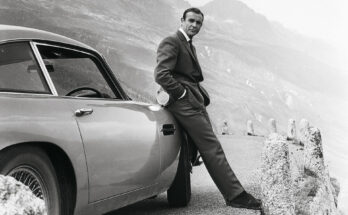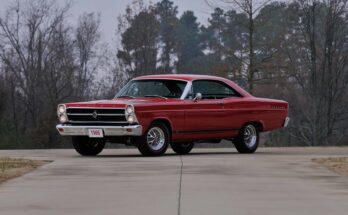In the spring of 1979, the streets of suburban America hummed with the promise of a new era. Disco pulsed through radio speakers, bell-bottoms still clung to fashion, and the automotive world was navigating a tricky transition from the muscle car glory days to a more fuel-conscious future. Amid this backdrop, 22-year-old Danny Russo, a mechanic’s apprentice with a knack for dreaming big, stepped into his local Pontiac dealership in Flint, Michigan. His eyes locked onto a sleek, jet-black 1979 Pontiac Grand Prix SJ Coupe gleaming under the showroom lights. This wasn’t just a car—it was a statement, a blend of luxury and rebellion that spoke to Danny’s soul.
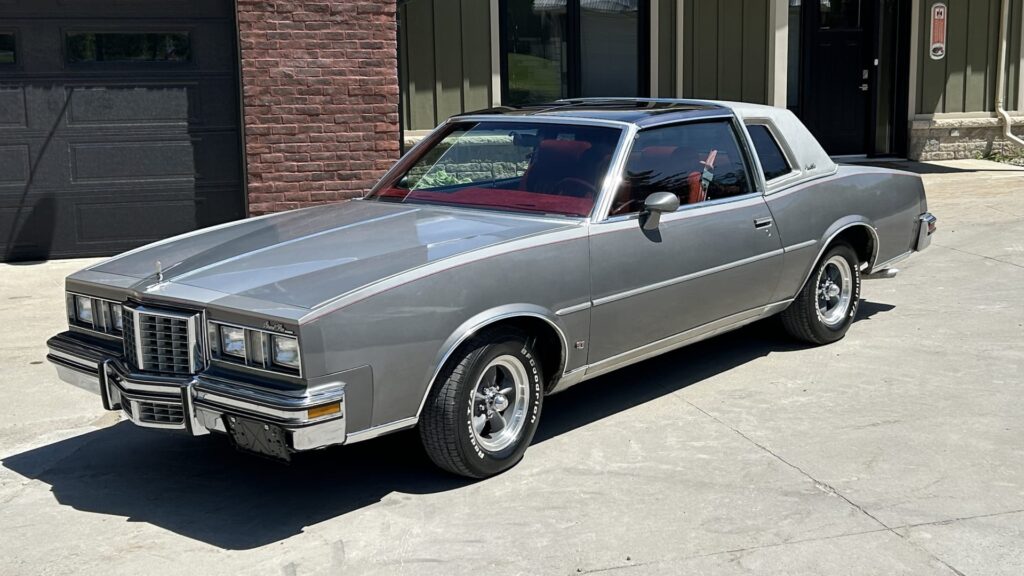
The Design: Bold Elegance in a Changing World
The 1979 Pontiac Grand Prix SJ Coupe was a product of its time, a personal luxury coupe that balanced the swagger of the past with the realities of the late ’70s. Fresh off a downsizing for the 1978 model year, the Grand Prix rode on GM’s A-body platform with a 108.1-inch wheelbase, shorter than its predecessors but still commanding attention. Its exterior was a study in bold yet refined style: a long hood stretched forward, ending in a distinctive crosshatch grille flanked by quad rectangular headlights. Chrome accents traced the edges, catching the sunlight, while revised taillight lenses added a subtle modern touch. The SJ’s optional T-tops, a favorite among enthusiasts like Danny, promised open-air cruising without sacrificing the coupe’s sleek silhouette.
Inside, the Grand Prix SJ was a sanctuary of comfort and sportiness. The “Strato” bucket seats, separated by a console that slanted toward the driver, gave the cabin a cockpit-like feel. Danny ran his hand over the optional leather upholstery, a step up from the standard “Morrokide” vinyl or cloth, marveling at the plush texture and the faint scent of new car. The Rally Gauge Cluster, standard on the SJ, featured a tachometer and engine gauges, hinting at the car’s performance roots. Faux wood accents adorned the dashboard, a nod to the era’s love for opulence, while power windows, a tilt steering wheel, and an optional AM/FM/CB radio (a fading craze by ’79) brought modern convenience. For Danny, it was the perfect blend of luxury and attitude—a car that could turn heads at the drive-in or hold its own on a backroad cruise.
Under the Hood: Power in a Malaise Era
The 1979 Grand Prix SJ Coupe wasn’t the fire-breathing beast of the early ’70s Grand Prix models, but it still had enough grit to satisfy. Under the hood sat a standard 301 cubic-inch (4.9-liter) Pontiac V8 with a four-barrel carburetor, pumping out 150 horsepower and 240 lb-ft of torque at a low 1600 rpm. While not a powerhouse by 1969 standards—when 428 cubic-inch engines roared with nearly 400 hp—it was respectable for the malaise era, where emissions regulations and fuel economy concerns tamed Detroit’s output. Danny, who’d grown up hearing tales of 455-powered Grand Prix SJs, knew the 301 wasn’t a dragstrip king, but its smooth delivery and throaty exhaust note still quickened his pulse.The SJ’s standard automatic transmission, a Turbo Hydra-Matic, sent power to the rear wheels with effortless grace. For purists, a rare four-speed manual (like the Saginaw unit in some examples) was available, though Danny’s SJ came with the automatic for easier cruising. The radial-tuned suspension, exclusive to the SJ, paired with optional radial tires, gave the car a balance of cushioned ride and responsive handling. It wasn’t a sports car, but on winding Michigan roads, it held its own, absorbing bumps while letting Danny carve corners with confidence. Car and Driver tests from the era clocked similar models at 0-60 mph in under 10 seconds—a feat that felt plenty quick in a world of sluggish sedans.
The Cultural Impact: A Symbol of Resilience
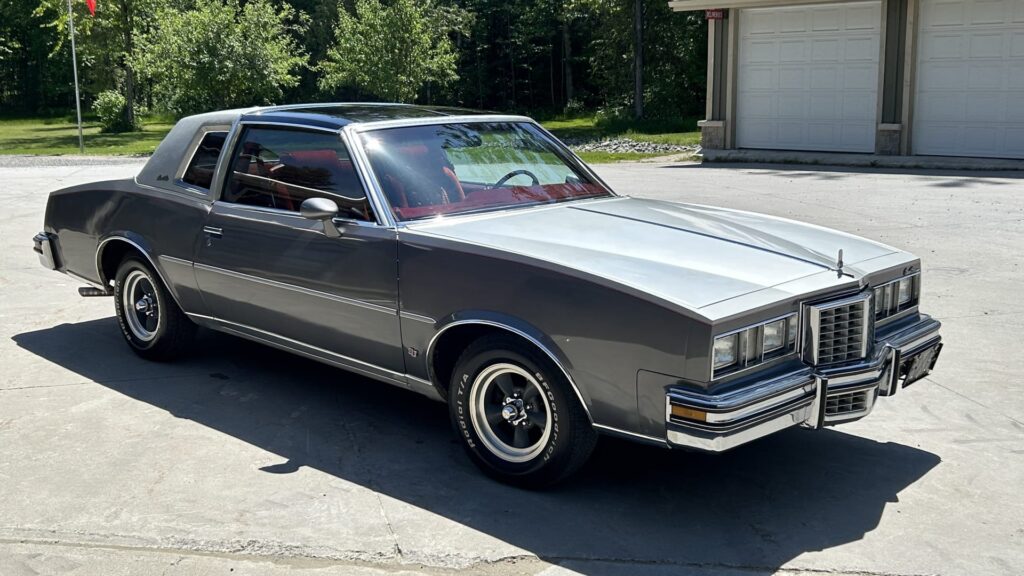
The 1979 Pontiac Grand Prix SJ Coupe arrived at a pivotal moment. The oil crisis and economic challenges of the late ’70s had reshaped the auto industry, pushing manufacturers toward smaller, more efficient cars. Yet the Grand Prix refused to abandon its identity as a personal luxury coupe, a segment it had helped define a decade earlier. Its closest rivals—the Chevrolet Monte Carlo, Buick Regal, and Oldsmobile Cutlass Supreme—shared its platform but couldn’t match the Pontiac’s bold grille or sporty flair. The SJ, in particular, stood out with its standard V8, rally gauges, and radial-tuned suspension, appealing to buyers who wanted a touch of performance in their luxury.For Danny, the car was more than a status symbol; it was a connection to Pontiac’s legacy of innovation. The Grand Prix name, born in 1962 and elevated to icon status with the 1969 redesign, carried a reputation for blending muscle with sophistication. The ’79 model, though downsized, still echoed that spirit. It appeared in films and TV shows, its sleek lines catching the camera’s eye, and celebrities were spotted behind the wheel, cementing its place in pop culture. Production numbers were strong—around 210,000 Grand Prix units rolled out in 1979, with the SJ as the top-tier trim—ensuring its presence on American roads.
Details of the 1979 Pontiac Grand Prix SJ Coupe
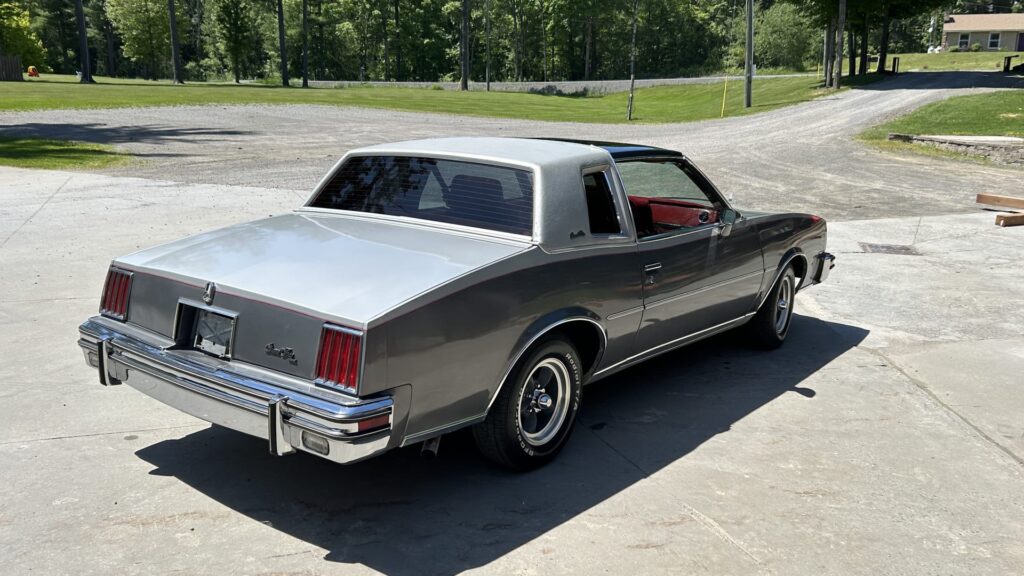
- Body Style: Two-door hardtop coupe
- Platform: GM A-body (downsized for 1978-1987)
- Wheelbase: 108.1 inches
- Engine: Standard 301 cu in (4.9L) Pontiac V8, 150 hp at 4000 rpm, 240 lb-ft torque at 1600 rpm; optional 305 cu in (5.0L) Chevy V8 in California (140-160 hp)
- Transmission: Standard Turbo Hydra-Matic automatic; optional four-speed manual (Saginaw, rare)
- Suspension: Radial-tuned suspension (SJ-exclusive), optional radial tires
- Interior Features: Strato bucket seats, console with floor shifter, optional leather upholstery, Rally Gauge Cluster (tachometer, engine gauges), faux wood accents, power windows, optional AM/FM/CB radio
- Exterior Features: Crosshatch grille, quad rectangular headlights, chrome accents, revised taillights, optional T-tops, landau roof, snowflake alloy wheels
- Performance: 0-60 mph in under 10 seconds (per contemporary tests)
- Price: $4,962 for SJ package ($35,147 in 2024 dollars)
- Production: Approximately 210,000 Grand Prix units (all trims) in 1979
- Market Value (2025): $5,000–$20,000+ for well-maintained or restored examples
- Cultural Significance: Emblematic of the personal luxury coupe era, featured in media, driven by celebrities

